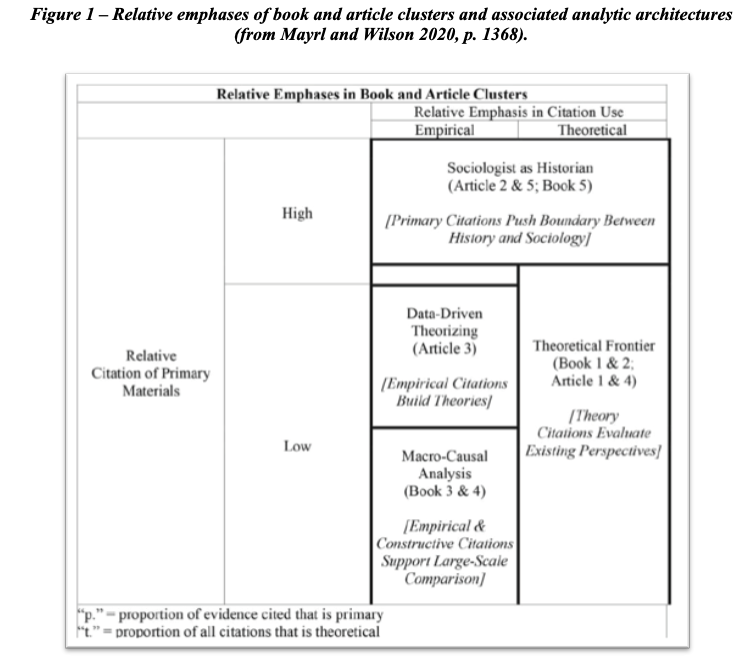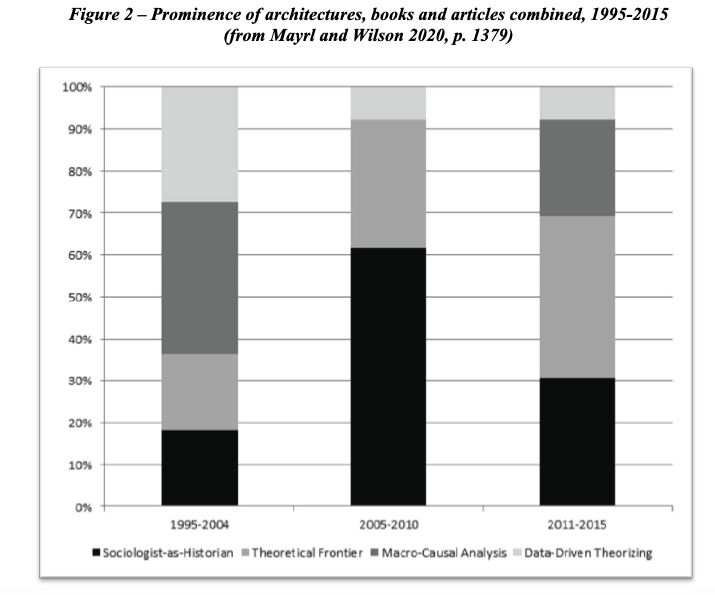Philip Gorski, Yale University
At first glance, the protesters who gathered around the American Capitol on 6. January seemed to be a motley crew. One observer espied: “Preppy looking country club Republicans, well-dressed social conservatives, and white Evangelicals in Jesus caps…standing shoulder to shoulder with QAnon cultists, Second Amendment cosplay commandos, and doughy, hardcore white nationalists.” The symbolism on display also seemed like apples and oranges. One group erected a giant cross, another a wooden gallows. Someone in the crowd waved a “Jesus Saves” banner, while another sported a “Camp Auschwitz” hoodie.
On closer inspection though, the picture gets murkier, the lines harder to draw. Christians waved Trump flags. The neo-Fascist militia group known as the “Proud Boys” kneeled and prayed before plunging into the breach. Nor were such mixtures of Christian, nationalist and white supremacist symbols unusual. One man, decked out as a cosplay crusader, clutched a large leather Bible to his chest with skeleton gloves. What looked like apples and oranges turned out to be a fruit cocktail: White Christian Nationalism (WCN).
What is WCN?
WCN is, first of all, a story about America. In this story, America was “founded as a Christian nation.” It was founded by and for (white) Christians; and its laws and institutions are based on “Biblical” (i.e., Protestant) Christianity; or perhaps even breathed into the Founders’ ears by God, Himself. This much is certain though: America is divinely favored. Whence its enormous wealth and power. Divine blessings lead to national obligations. America has been entrusted with a sacred mission: to spread religion, freedom and civilization – by force, if necessary. Today, that mission is endangered by the growing influence and even the mere presence of non-Christians (also: non-whites) in America. White Christians must therefore “take back the culture” and also “the country.” Which are, after all, their rightful possessions. What White Christian Nationalists hear when Trump promises to “Make America Great Again”: “Make America Christian Again.” And, sotto voce, make it “White Again”, too.
WCN is not just a story. It is also a political vision, manifested in a set of “policy preferences.” Violence and retribution are central to that vision. As survey researchers such as Samuel Perry and Andrew Whitehead have shown, White Christian Nationalists tend to favor a strong military and capital punishment; they also strongly oppose gun control. Racial purity is also central to the vision. As Perry and Whitehead also show, WCN is strongly correlated with opposition to interracial marriage, non-white immigration and affirmative action. It’s not hard to see what’s white and nationalist about this vision. It’s more difficult to understand its roots in Christianity. Isn’t Christianity a religion of universal peaceand brotherhood?
To understand how American Christianity became entangled with racism and violence, we first have to trace it back to its Scriptural roots. Those roots are threefold. WCN is not just one story, but a combination of three. The first is a Promised Land story based on the Old Testament. The New England Puritans saw themselves as the heirs of the Biblical Israelites.They imagined themselves as a “chosen people, and they came to see the “new world” as their “Promised Land.” For a while, they thought the native peoples might be one of the “lost tribes” of Israel. But as their relationship with the natives shifted from curiosity to hostility, the Puritan settlers recast the Indians as “Canaanites” or “Amalekites”, who were occupying “their” Promised Land.
The second story is an End Times story based on the Book of Revelation. For much of Western history, most Christian theologians read that book in allegorical terms. The violent struggles it depicted between the forces of good and evil, they reasoned, actually represented the moral struggles that took place within the believer’s heart. But there were always some Christians who interpreted the text more literally, as a description of future events. Many Puritan radicals embraced such readings, and took them along to New England.
The two stories gradually fused together during the Puritans’ wars with the natives during the late 17th century. Puritan theologians such as Cotton Mather came to believe that the New World might be the central battlefield in the final struggle between good and evil foretold in Revelation. Needless to say, Mather placed himself and his Puritan brethren on the side of the good, and the Catholic French and their native allies on the side of evil. He and other Puritans likened the Indians to demons and depicted the Indian wars as blood sacrifices to an angry God. It was war — the violent struggle between the English and the French and the Indians that some historians now refer to as the “Second Hundred Years War” – that welded Protestantism and Englishness together in the New World.
But how did Protestantism and Englishness get entangled with whiteness? To answer that question, we need to shift our focus to the south, to that other seedbed of American culture: The Colony of Virginia. There, and elsewhere, the most common justification for the enslavement of kidnapped Indians and Africans was that they were “heathens.” But this argument broke down in the late 17th century as some enslaved persons converted to Christianity and some white Christians sought to evangelize them. The problem was initially resolved by shifting the legal basis of slavery from religion to color: “Blacks” could be slaves; “whites” could not. It was then more fully resolved by creating a new theological bases for slavery. Perhaps the most influential was the “Curse of Ham.” Blacks were the descendants of Noah’s son, Ham, the argument went, and their color and enslavement were a result of the curse that Noah had called down on head. This is the third story: The Racial Curse Story.
It would be another century before WCN became American. Until the American Revolution, most colonists still considered themselves British. It was only after the Revolution, that they began to think of themselves as “American.” Until that time, the term “Americans” was more often used to refer to the native peoples. So, one way that (white) Americans set themselves apart from their British “cousins” was by claiming to resemble (native) Americans. The American (man) was a little more savage, a little more violent, than his British forebears. He was, in a sense, the true heir of the Indian who was (supposedly) disappearing, and the true inhabitant of the “frontier.” The white American had a trace of the red American in him.
WCN is what linguist George Lakoff calls a “frame.” A frame is sort of like a bare-bones movie script. It “has roles (like a cast of characters), relations between the roles, and scenarios carried out by those playing the roles.” Like a movie, it can be made and remade, with new actors and modified scenarios. The “frontiersman” becomes an “Indian fighter” and then a “cowboy.” The scene shifts from Appalachia to Kentucky to Wyoming.
Or to Texas and California. There, new actors entered the scene. Some did so involuntarily. Former citizens of Mexico did not choose to become Americans. Others came freely. Though immigrants from China and Japan did not find the freedom they were promised. Instead, they were cast into roles they did not audition for: “savages” and “heathens” unfit for “freedom” or even “civilization.” As the scene of the action followed the “frontier” to the South and the West, the actors changed but the roles remained the same.
It was not until the “closing of the frontier” and the beginnings of empire, that the script fundamentally changed: White Protestant Nationalism was reborn as WASP imperialism. The revisions were as follows. First, as Catholics and Jews from Southern and Eastern Europe and Ireland were begrudgingly admitted into the charmed circle of whiteness, various shades of whiteness were distinguished: the whitest of the white were “Anglo-Saxons” (or, alternatively, “Nordics” or “Aryans.”) Second, the Promised Land became the Whole World. The motive was no longer conquest; it was “spreading freedom”, “civilization” and, of course, Christianity. All this as an act of benevolent “self-sacrifice.” Third, the End Times were indefinitely postponed. The Kingdom of God on earth would be achieved through the spread of Christian civilization – whether by peaceful or violent means.
The Spanish-American War of 1898 marked the beginning of WCN qua WASP Imperialism. By the end of the Cold War in 1989, WCN mutated yet again to become (White) Judaeo-Christian Imperialism. The parentheses around “white”reference the shift from the explicit white supremacism of the Jim Crow era to the “colorblind” racism of the post-Civil Rights Era. “Judaeo-Christian” gestures towards the “trifaith” vision of American pluralism that took root during World War II. “Imperialism” points towards the fundamental continuity that runs through 20th century American geopolitics: an empire of soldiers, missionaries and businessmen, but an empire all the same.
What really changed during the second half of the century was not so much the script as the scriptwriters. Since the Colonial Era, the dusty old script of WCN had been passed down from one generation of liberal Protestants to another: Congregationalists and Presbyterians, Episcopalians and even Unitarians. By the 1970s, though, they had abandoned WCN – and religion, too, in many cases. Liberal Protestants were becoming secular progressives. A rising phalanx of white evangelicals eagerly seized the torch. They began fiddling with the script. They brought back the original version of the End Times Story with its battles between good and evil and natural and supernatural forces. With the WASPs out of the way, they went back to good old plain white – which, they insisted, was no color at all. And while they remained firmly committed to American Empire qua military power, they expressed reservations about international institutions that might limit US “sovereignty.”
They had a good run but a short run. By the early aughts, they were losing control of the narrative”, as we now say. The problem was simple: the number of white Protestants was dwindling. They were no longer able to dominate the scene. Immigration and secularization were the cause. The presence of a Black family in the White House added insult to injury. The Financial Crisis of 2008 poured salt in the wound. The howls of pain from conservative white men in the American“heartland” were the loudest.
Enter Donald Trump, Golden Escalator, stage right. At first glance, he seemed an unlikely champion of WCN. But “Christian” had often been outvoted by “White” and “Nationalist” in the past, and the selection of Mike Pence made it unanimous. Trump’s Schmittian friend/enemy politics lined up easily enough with WCN’s good/evil frame. His sociopathic bloodlust and gladiatorial performativity stirred dormant phantasies of white male violence. And then there was his unapologetic and barely concealed racism. “The Blacks”, “The Mexicans”, “The Muslims” – Trump’s vision was the opposite of colorblind. And much as Trump loved “winning”, he was no fan of empire. That was for “losers and suckers.” In short, Trump preached an old-time religion of White Christian Nationalism.
There was just one problem: White Christian Nationalists could no longer muster a majority of the popular vote. They were saved by the Electoral College in 2016 – literally “saved”, they thought. But not in 2020. And surely not fairly? The lies of their “anointed” leader aside, how could they be losing control of “their” country? Trained to see hidden forces behind political events in “End Times 101”, they were quick to see them behind Trump’s loss, too. And if a “sacred election” were stolen from you, wouldn’t you try to “stop the steal”? So they tried. Unsuccessfully.
Where does this leave us?
I am told that the Chinese character for “crisis” combines the characters for “danger” and “opportunity.” The danger is obvious: the Republican Party has become an anti- democratic party prepared to use all available means to retake power. If they succeed, the experiment of American democracy, however imperfect, is over. The opportunity, too: to undertake a Second Reconstruction that will – finally – realize Martin Luther King’s vision of a “nation of nations, a people of peoples” or, more plainly, a multiracial democracy. It will require, not just a rewrite of the WCN script, but it’s consignment to the dustbin of history.
The essay is published at TRAJECTORIES (Spring 2021 – Special Issue)




